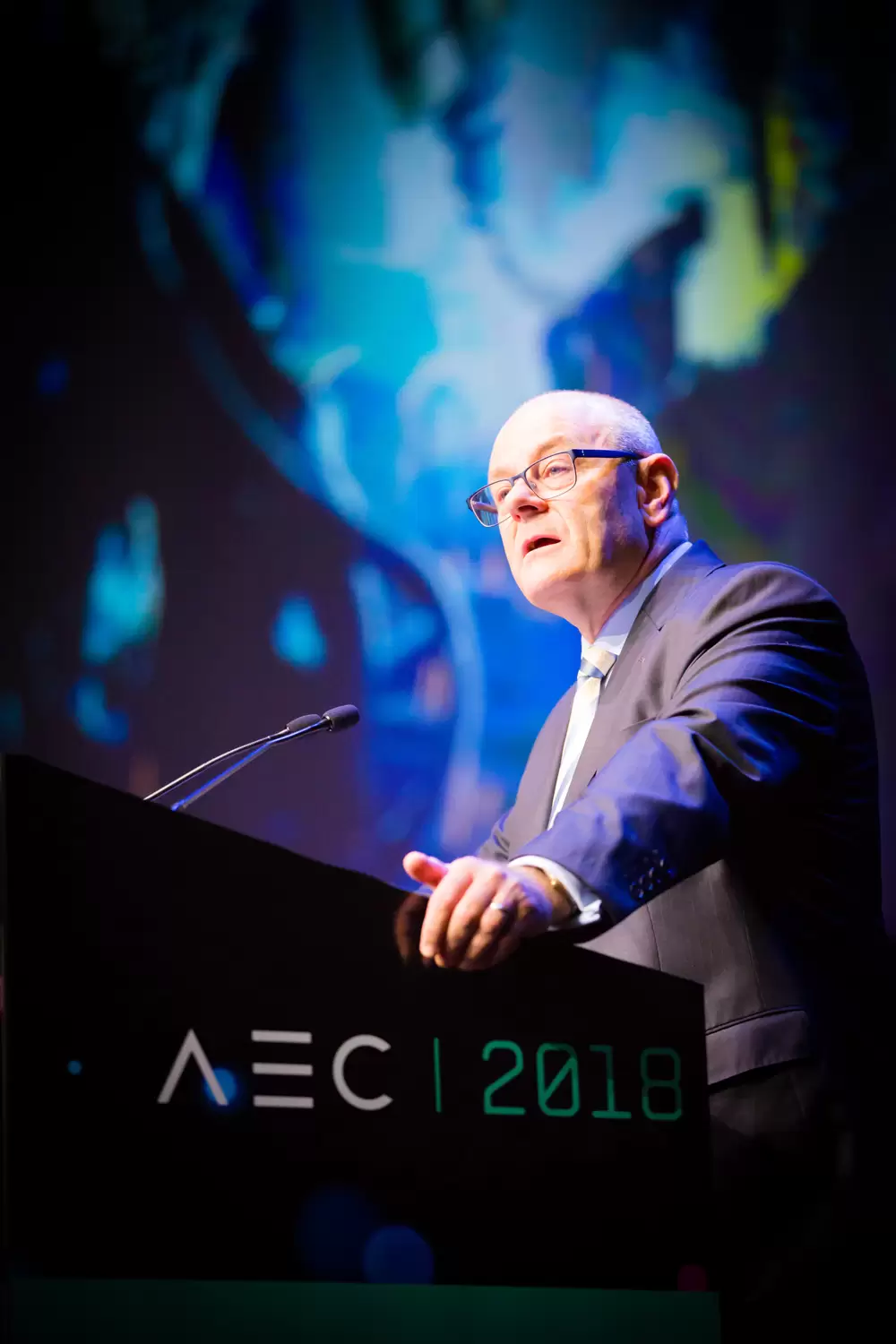It is readily acknowledged that engineers are crucial to Australia’s future success – because they turn ideas into reality, and engineering underpins almost every aspect of modern life.
Opening the Australian Engineering Conference (AEC) in Sydney today, Engineers Australia CEO Peter McIntyre noted that while engineers are innovators, they are all too easily caught up in their day-to-day work to stop and take some time out to look at the big picture, and ask the big and important questions.
“This conference is an opportunity to do just that, with diverse topics united by the underlying theme of technological change and the future of engineering,” he said.

McIntyre also acknowledged Australia’s oldest known engineers, the Aboriginal people of Budj Bim in what is now Victoria. Around 6600 years ago, they used volcanic rock to build an ingenious system of channels and weirs to harvest eels as a food source year round.
AEC features an interesting lineup of topics with presentations led by experts from Australia and overseas. A common theme running through the three days is the way rapid technological advances are changing our world — and the engineering profession.
In her opening address, Chairman and National President of Engineers Australia, Trish White elaborated on the conference theme ‘what does the future hold for the future of engineering’.
Professions like law and accountancy have seen rapid commoditisation and robots are becoming better at surgery than surgeons. Despite these developments, White emphasised that the future of engineering in the country is bright.
“The value an engineer brings to the increasingly complex problems of modern times lies not solely in our technical knowledge, nor is it rooted just in our problem-solving processes,” White said.
“Rather, the value we add comes from the deliberate integration of both these things towards some meaningful end.”
A modern engineer has to think analytically and be prepared to get into the detail. But they also need to import ideas from wide networks, to collaborate across disciplines and to understand the broader context and complexity of the problem they seek to solve.
“You need to view technology through a human lens and you need much creativity to innovate,” added White.
Imperative to increase diversity
With women making up only 13.6 per cent of the country’s engineering workforce, the lack of diversity poses a significant challenge for the profession.
“Engineers Australia has set targets for our own organisation and we’re calling on universities and employers alike to step up and commit to targets,” White said.
Demand for engineers in is increasing and Engineers Australia sees no decline in that demand in the foreseeable future. But there is a challenge with the pipeline. Explained White, “Nationally, only 12 per cent of boys and seven per cent of girls study advanced math in Year 12. Less than six per cent Year 12 girls study physics.
Initiatives like STARportal, developed by Engineers Australia in partnership with Office of the Chief Scientist, will have an impact. STARportal is a database of STEM activities that link families, teachers and students to STEM activities online and in their local areas. Engineers Australia’s technical societies and colleges and Engineering Education Australia play a critical role in professional development.
How can engineers help?
“Offer to speak at careers nights at your old school,” White said.
“Encourage the kids in your life to take on STEM subjects. Talk to everyone, young and old, about what it is you do as an engineer and how that benefits society. Take on work experience kids and mentor junior engineers.”
The National Engineering Registry is another key initiative, as the community can be assured that engineers on the register are qualified to practice in their area of specialisation, abide by a professional code of ethics, participate in continuous professional development and are covered by professional indemnity insurance.
As the peak engineering organisation in this country, Engineers Australia exists to advance the science and practice of engineering for the benefit of the community.
“Our profession is like no other,” concluded White.